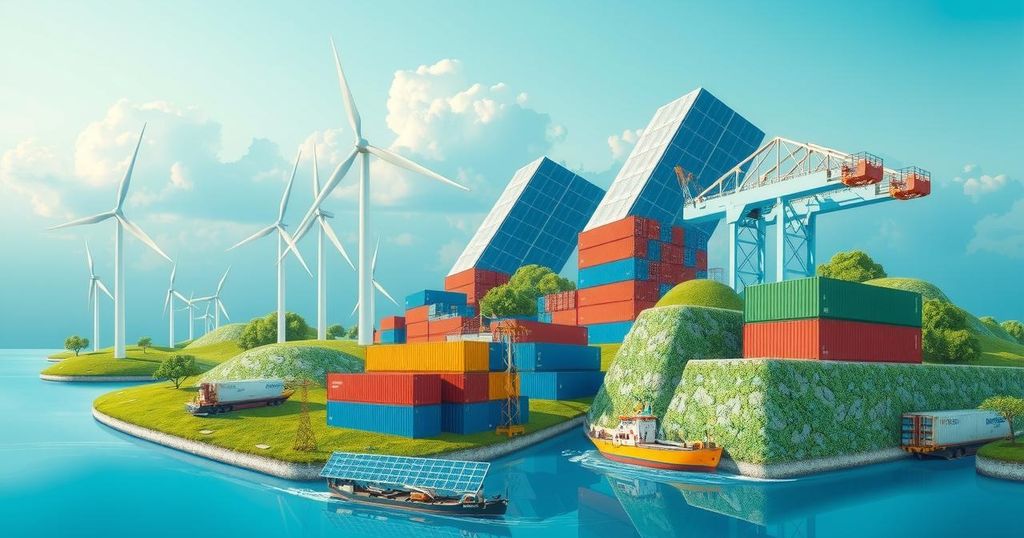Political Cycles and Q3 2025 Market Opportunities
- The third quarter of 2025 will be crucial for global markets.
- Germany’s elections may alter the trajectory of its Clean Industrial Deal.
- Philippines’ elections will impact its trade relations with the U.S.
- Mexico’s judicial elections could streamline infrastructure projects.
- Geopolitical tensions continue to threaten market stability.
Market Implications of Political Cycles in 2025
The upcoming third quarter of 2025 is shaping up to be a decisive moment for markets worldwide as several elections loom large in major geopolitical arenas. These elections are set to reshape the landscape of policies and detailed valuations across various sectors. From the bustling industrial zones of Germany to the manufacturing hubs of Southeast Asia, the political cycle’s influence cannot be understated—it creates both notable opportunities and unmistakable risks for investors looking to navigate these shifting tides with some semblance of strategic foresight.
Impact of Germany’s Elections on the Energy Sector
Looking specifically at Germany, the parliamentary elections slated for February 23, 2025, hold significant implications for its ambitious Clean Industrial Deal, a cornerstone of the European Union’s wider decarbonization strategy. If a coalition emerges that is supportive of robust climate initiatives, we could see investments ramp up in sectors like renewable energy and electric vehicles. On the flip side, if a center-right coalition gains control, the emphasis may shift towards fiscal discipline, leaving climate-related investments in a state of uncertainty. Companies like Siemens Games, recognized for its leadership in renewable energy, serves as a barometer for assessing potential regional policy directions and likely corporate valuations.
Navigating Trade Dynamics in Southeast Asia
Turning to Southeast Asia, the Philippine legislative elections on May 12 will serve as a litmus test for the current government’s capability to maneuver through the tricky waters of escalating U.S.-China trade tensions. Since tariffs on major Philippine exports such as steel and semiconductors remain an unresolved issue, a government supporting stronger ties with the U.S. could facilitate favorable trade agreements that bolster sectors like technology and logistics. Concurrently, while the political landscape in Indonesia remains stable, the impact on commodity prices will inevitably be tied to its potential volatility, especially as it plays a vital role as a nickel supplier essential for EV batteries. Hence, the Philippine Stock Exchange Index’s performance will rely heavily on Manila’s capacity to attract foreign capital and settle trade disputes in a timely manner.
Legal Reforms and Commodities in Latin America
In Latin America, the judicial election in Mexico set for June 1, 2025, has the potential to rework existing legal frameworks that directly affect industries such as mining, energy, and infrastructure. A judiciary deemed independent and efficient might ease the permitting process for large projects, undoubtedly benefiting construction and natural resource firms. Meanwhile, Brazil’s 2026 presidential election casts a long shadow over commodity markets, with the current administration’s stance on defense and spending deeply affecting investor sentiment in the region. Notably, Vale, a key player in Brazil’s iron ore sector, stands to gain if a pro-growth policy environment develops; however, threats like fluctuating global demand from China could create headwinds for the company.
Geopolitical Tensions and Energy Price Fluctuations
As we analyze cross-regional risks, it becomes clear that ongoing geopolitical conflicts, particularly in the Middle East and the energy dynamics from Russia, add a layer of complexity to the already volatile market conditions. Any further escalation could lead to spikes in Brent crude prices, and indeed sectors such as airlines and utilities would likely suffer. Furthermore, mark your calendars for August 7, 2025—the date when the U.S. debt ceiling could potentially impact global liquidity. If commodity prices surge or bond spreads widen, increasing risk aversion would likely encourage a flight towards defensive assets like gold or utility stocks, signaling that investors should tread cautiously in waters that seem increasingly tumultuous.
Strategic Approach to Investment in 2025
As we move forward into Q3 2025, dissecting these election outcomes and their sectoral consequences will be crucial for investors. Factors such as Germany’s green ambitions, trade relationships in Southeast Asia, and regulatory frameworks in Latin America will be of utmost importance. It is evident that while promising opportunities exist in fields like renewable energy, technology, and infrastructure, the inherent geopolitical risks compel one to adopt a carefully diversified investment strategy to weather potential pitfalls.
In summary, the third quarter of 2025 is rife with potential for market movement driven by political shifts. Investors should closely monitor Germany’s approach to climate initiatives, trade dynamics in Southeast Asia, and legal reform impacts in Latin America. Staying vigilant in one’s investment strategy, with an emphasis on diversification and sector-specific insights, will be paramount in addressing and capitalizing on the complexities of this evolving landscape.




Post Comment